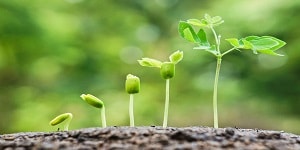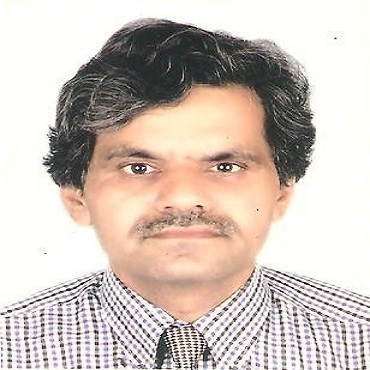
Plant Science 2018

Theme: Explore the scope of Plant Science
Plant Science 2018 Conference aims to discover advances in plant science scientists, management and education in relation to plant disparities as well as a breadth of other topics. A plant science professional has a special set of competence and ability. Not only can they diagnose plant tissue and finally provide medication, but they also serve in leadership and consulting roles. Researchers are prominent and impact health care across the board, from reducing medical complications to improving research satisfaction.
Session-1: Plant Science:
Plant Science includes plant biology with emphasis in the broad areas of genomics, proteomics, biochemistry (including enzymology), physiology, cell biology, development, genetics, functional plant breeding, systems biology and the interaction of plants with the environment.
Plant Science ranges from developing molecular techniques for genetic engineering to ecological research in the field of plant science. Ultimately the natural products wants to contribute to fundamental knowledge of basic biological processes related to development and health and the sustainable production of more healthy foods, flowers and high-value bio-based products.
Session-2: Plant Morphology:
Plant morphology is all about with both the vegetative structures of plants, as well as the reproductive structures. It includes plant development, floral structure, pollination and fertilization. Plant morphology provides an overview of the science of deals with the external form of plants. Plant metabolism includes the complex of physical and chemical events of photosynthesis, respiration, and the process of natural compounds. Plant respiration is biochemical process in plants whereby specific substrates are oxidation with a subsequent release of carbon dioxide.
Session-3: Plant Biotechnology:
Plant Biotechnology is prominent in the field of medicine interfacing biotechnology and bioinformatics, the molecular characterization of medicinal plants; molecular farming; and result from chemistry, nanotechnology, pharmacology, agriculture, Biomass and biofuels as well. Plant tissue culture is the growth of plant cells outermost an intact plant. It depends on maintaining plant tissue in lab conditions on a suitable nutrient medium. The culture can be sustained as a mass of undifferentiated cells for a broad area for a period of time, or regenerated into whole plants. The dissimilar techniques used in plant tissue culture. Plant tissue culture is mostly used to produce clones of a plant in a method known as micro-propagation with different stages. Plant Biotechnology is the technology which is used for getting modern product with high yield and at faster rate.
Session-4: Plant pathology:
Plant pathology is the scientific discovery of diseases in plants caused by pathogens and environmental conditions. Organisms that cause viral disease include fungi, bacteria, viruses, viroids, virus-like organisms, phytoplasma, protozoa, nematodes and dependable plants. A plant considered undesirable, unattractive, or troublesome, especially one that grows where it is no need and often grows or spreads fast or takes the place of desired plants. It is an aquatic plant or alga, especially seaweed.
Session-5: Plant Genetics:
Transgenes appear to be particularly sensitive to epigenetic variation which can lead to transgene silencing, i.e. the complete or partial inactivation of transgene expression. Plants are ideal model systems to study the influence of changing environmental conditions on epigenetic patterns. We are especially interested to understand how certain genomic regions become targets for epigenetic modification and how environmental stress affects epigenetic gene regulation. Our applied work investigates how transgene silencing can be prevented and how epigenetic variation can be exploited for novel breeding strategies.
Session-6: Plant Physiology:
The Study of plant morphology, growth, metabolism and reproduction in living plants and also concerned with the plant morphology and some essential process such as photosynthesis, respiration, plant nutrition, plant hormone functions, tropisms, nastic movements, photo -morphogenesis, environmental physiology (plant diseases), seed germination, dormancy and stomata function and transpiration, plant water relations. Plant biochemistry is related to molecular science such as macromolecules and plant metabolisms, Biomolecules, carbohydrates, amoni acid, lipids.
Session-7: Plant Breeding:
Plant breeding is the technology which is used for Plant Molecular Biology to select, or in the case of genetic modification, to place particular traits into plants. Molecular breeding such as marker assisted selection and doubled haploids are immensely useful techniques. There is way that through plant breeding can also utilized by organic cultivation.
Session-8: Plant Nanotechnology:
The complex and different responses of plants to nanoparticles, the signal transduction mechanisms involved, and the regulation of DNA expression. Further, it showing the photosynthesis of nanoparticles, the role of nanoparticles in the antioxidant systems of botany and agriculture, the beneficial and harmful effects of nanoparticles on plants, and the application of nanoparticles and nanotubes to MS, aiming ultimately at an analysis of the metabolomics of plants. The increasing role of inventions in the field of nanotechnology is producing novel applications in the fields of biotechnology and agriculture. Nanoparticles have received much response because of the unique physico-chemical properties of these compounds. In the plant biology, nanoparticles are used as “smart” delivery systems, prompting the Nobel Prize winner P. Ehrlich support to get these compenents as “magic bullets.” Nanotechnology also play an important role in agriculture as compound fertilizers and minute-pesticides, acting as chemical delivery agents that target molecules to specific cellular organelles in plants.
Session-9: Medicinal Plant Sciences:
The importance of plants has been concluded by scholars since ancient period. Apart from the innumerable social benefits, much strength has been given to the plants of medicinal value. Majority of the population in developing countries assume on traditional system of medicine for their primary health care. Due to this increasing trend towards use of different system of medicine, natural medicinal plant resource in this world is under enormous pressure. Several Institution/ Organization/ Universities and Industries across the world have been steady in research and documentation of various conditions of these medicinal plants to frame a system for their preserving. In this way numerous research papers on each medicinal plant covering vast subject areas like Botany, Chemistry, Pharmacology, Pharmacy etc. are available. This will help the scientific community to keep themselves restore with the research and development work being implemented for a particular medicinal plant. This researcher will also be a source of favorable information for students, teachers, practitioners all those who are involved in their propagation etc.
Session-10: Plant Nutrition and Soil Sciences:
Plant Nutrition and Soil Science is the study of the functions and dynamics of nutrients in plants, soils and ecosystems as well as of plant production processes with the goal to improve the growth of plants to increase the quality of harvest products, to improve soil fertility, to promote the recycling of nutrients, to reduce the cost of resources, to minimize fertilization - related environmental impacts.
Session-11: Agricultural Science:
Agriculture deals with the promotes in genetics, physiology, biochemistry, biophysics, and molecular biology. Agriculture science is related to techniques, including the application of agronomic research. Agricultural biotechnology is a specific area of agricultural science includes the use of scientific tools and techniques, including manipulation of genome, genetic markers, molecular diagnostics, vaccines, and plant biotechnology, to modify living organisms: plants, animals, and microorganisms.
Session-12: Aquatic plants ecology:
Aquatic plants are plants those that are living in aquatic environments like fresh water and salt water. Hydrophytes or macrophytes are the two groups of plants. These plants live submerged in water or at the water's surface so they have special features in them. The common adaptation of these plants is aerenchyma. But other common things are floating leaves and finely dissected leaves. These plants grow in the regions where there is water permanently or the land submerged in water. Algae are the very important part of the aquatic life. These aquatic plants provide cover, habitat, and food so they play the important role in aquatic life. There should not be too many plants because they can hindersome of the activities like fishing, water skiing, and aesthetic appreciation. The major threats that are posed to the aquatic ecology are the exotic species and plants. They cannot be eradicated once they adapt to this new environment.
Session-13: Indigenous medicine:
Indigenous medicine is also called as traditional medicine. Traditional medicine is the one which was prevalent before the era of modern medicine. Mostly they used plants to cure the diseases. And they are used by herbal therapies, traditional medicine practitioners. The traditional medicines varied according to belief and culture of the people. In this modern era, the people consider that these traditional medicines are unsuitable. One of the plants Ginseng which is widely used in traditional medicine and now this plant plays a major role in herbal health care. Every part of the plant has been used for the treatment of diseases. One of the main advantages of traditional medicine is that it doesn’t have side effects as it is in modern medicine. Loss of strength, bleeding disorders is treated using the roots of the plant. Ethnomedicine is a study that compares the various types of traditional practices that are followed by the indigenous people.
Session-14: Biodiversity:
Biodiversity generally refers to the variety of plant and animal life in the world or in a particular habitat. Biodiversity measures the variation at three levels they are the genetic, the species, and the ecosystem level. Biodiversity is the very important factor to be considered. Human activities have destroyed the biodiversity in all the levels. Plant plays the important role in the diversity so it is very important to conserve the plant diversity plants forms the basis of every food webs so it is very important to take necessary steps to conserve the plant biodiversity. Today many plants are in the verge of extinction so the conservation of those plants should of first priority.
Session-15: Plant & Forest Ecology and its Diversity:
The plants require water and minerals come from the soil, while carbon dioxide comes from the air. Macronutrients and Micronutrients are the essential elements required by plants. Soil quality is a major determinant of plant distribution and growth. Nitrogen is often the mineral that has the greatest effect on plant growth. Plants require nitrogen as a component of proteins, nucleic acids, chlorophyll. Biological nitrogen fixation (BNF) occurs when atmospheric nitrogen is converted to ammonia by an enzyme called nitrogenase. Soil science is the study of soil as a natural resource on the surface of the Earth including soil formation, classification and mapping and soil erosion.
Session-16: Forest Science and Technology:
The Forest Science is a complex ecosystem consisting mainly of trees that buffer the earth and support a myriad of life forms. The trees help create a different environment which, in turn, affects the kinds of animals and plants that can continue in the forest. Trees are an important part of the environment. They clean the air, cool it on hot days, conserve heat at night, and act as attractive sound absorbers.
Plants provide a protective canopy that lessens the impact of raindrops on the soil, thereby decreasing soil erosion. The layer of leaves that fall around the tree prevents runoff and allows the water to drain into the soil. Roots help to hold the soil in place. Dead plants decompose to form humus, organic matter that holds the water and add nutrients to the soil. Plants provide habitat to different types of organisms. Birds build their nests on the branches of trees, animals and birds live in the hollows, insects and other organisms live in different parts of the plant. They produce large quantities of oxygen and take in carbon dioxide. Transpiration from the forests alters the relative humidity and precipitation in a place.
Soil fertility is the main factor to be considered in cultivation or in gardening. Fertility is defined as the ability of soil to provide all essential nutrients to the plants in the form that is suitable for the plants to take in the nutrients and also in a suitable balance. Fertility of the soil also supports the exuberantgrowth of plants with very minimum effort of the human. The things that are needed for the soil to be fertile are it should have sufficient minerals, organic matter, etc. They also should have good soil structure and moisture retention ability. There are two types in soil fertility; they are permanent and temporary fertility. Soil quality is a major determinant of plant distribution and growth. Soil science is the branch of science that deals with the study of soil which considers the soil as a natural resource on the surface of the Earth. It also deals with soil formation and evolution, mapping of the soil and soil erosion. The demand for the crops is on continuous rise so there is a great need in recycling or retaining the fertility of the soil. The factors that affect soil fertility is climate, pH of the soil, chemicals and pesticides etc.
Session-18: Crop & Pasture Science:
Crop and Pasteur science is the study of the world's major food, feed, turf, and fiber crops, and their environment. It is a broad discipline encompassing breeding, genetics production, and management. The primary focus is broad-scale cereals, grain legumes, oilseeds and pastures.
Session-19: Herbal Byproducts Entrepreneurs Investment:
Entrepreneurs are known for taking risks. But when it comes to making personal investments, they're just as diligent as they are with their business finances, carefully balancing risk and reward and looking for opportunities where others are not. A key ingredient in successful entrepreneurship is self-knowledge. (Plant Science and molecular biology-2018) aims to bring together all existing and budding bio entrepreneurs to share experiences and present new innovations and challenges in microbiological community.
IMPORTANCE AND SCOPE
Plant Science Meeting 2018 is the study of the structure, function, growth and protection of plants. Plant science is divided into three major categories; they are agronomy, horticulture and forestry. Without plants, we and all other animals would not exist. We primarily depend on plants for food. They also have impact on the economy of a nation. Compared to the hundreds of plants on earth, we cultivate very few. Plant science has vibrant scope in conducting research in breeding, physiology, production, yield and management of crop. Plant science has the wide range of study field like plant morphology, plant pathology, molecular biology, plant genetics, photochemistry and many more subsequent fields.
Molecular biology is arguably one of the most important fields in biology. Plant biotechnology is leading the way in applications and will continue to bring innovations into the field. The field of plant biology is making remarkable steps forward in the use of genomics technologies to understand the mechanisms controlling many aspects of development, responses to the environment, hormone signalling, genome evolution and epigenetics. It seems that exciting times lie ahead for plant biotechnology that may lead to important applications in agriculture and other cultivation to help feed the growing global population.
Why Paris?
Plan Science is the fastest growing primary industry in Paris; in fact it is the fastest growing food production sector in the world. With limited room for expansion in wild catch fisheries together with an ever-increasing world population, there is a heavy reliance on aquaculture as the means for fish production to meet world demand. So the Plant Science Meeting 2018 is going to be held in France.
Paris, France's capital is a major European city and a global centre for art, fashion, and culture. Its 19th-century city scape is crisscrossed by wide boulevards and the River Seine. Beyond such landmarks as the Eiffel Tower and the 12th-century, Gothic Notre-Dame cathedral, the city is known for its cafe culture and designer boutiques along the Rue du Faubourg Saint-Honore.
Why to attend???
With members from around the world focused on learning about Plant Genomics and its advances; this is your best opportunity to reach the largest assembly of participants from the Plant Science and Genomics community. This Meeting seek to bring all such scientist, Noble Laureate, researcher, research scholar, students and people together who are involved in Plant Science and Genomics field and provide them to discuss about their unique innovation, sharing ideas and interaction with each other. World-renowned speakers, the most recent development and advancement in the field of plant genomics are the limelight of the conference.
Plant Science was expanded during the 1960s and 1970s as it had access to new land and unemployed labour. Between 1962 and 1983, the agricultural sector grew by 4.1% a year on average and in 1980 it employed over 70% of the working population. Yet, the state perceived developments in the agricultural sector as necessary for industrialization and exports were taxed in order to keep domestic prices low and raise revenue for state investment in other areas of the economy.
Target Audience:
- Plant Science / Agricultural Students, Scientists
- Plant Science Researchers
- Plant Science Faculty
- Agricultural Universities
- Horticulture and Landscaping
- Plant and Agriculture Associations and Societies
- Business Entrepreneurs
- Training Institutes
- Seed Science and Technology
- Soil science and soil-plant nutrition
- Medicinal and Aromatic Plant Sciences
- Forest Science
- Manufacturing Agricultural Devices Companies
- R&D Laboratories
Major Plant science Associations around the Globe
- American Society of Plant Biologists (ASPB)
- Australian Society of Plant Scientists (ASPS)
- Korean Society of Plant Biologists (KSPB)
- Committee of Professional Agricultural Organisations (COPA)
- General Committee for Agricultural Cooperation in the European Union (COGECA)
- European Commission on Agriculture (ECA)
- Argentinean Society of Plant Physiology (SAFV)
- American Society of Agronomy (ASA)
- African Crop Science Society (ACSS)
- Brazilian Society of Plant Physiology (SBFV)
- Botanical Society of China (BSC)
- Canadian Society of Plant Biologists (CSPB)
- Chile’s National Network of Plant Biologists (CNNPB)
- Chinese Society of Plant Biology (CSPB)
- Crop Science Society of America (CSSA)
- Crop Science Society of China (CSSC)
- European Association for Research on Plant Breeding (EUCARPIA)
- European Plant Science Organisation (EPSO)
- Federation of European Societies of Plant Biology (FESPB)
- Genetics Society of China (GSC)
- International Society of Plant Pathology (ISPP)
- Indian Society of Plant Physiology (ISPP)
- International Crop Science Society (ICSS)
- International Society for Horticultural Science (ISHS)
- Irish Plant Scientists' Association (IPSA)
- International Society for Plant Molecular Biology (ISPMB)
- Japanese Society for Plant Cell and Molecular Biology (JSPCMB)
- Japanese Society of Plant Physiologists (JSPP)
- Korean Society of Plant Biologists (KSPB)
- New Zealand Society of Plant Biologists (NZSPB)
Plant science universities in Paris:
- University of Montpellier
- Pierre and Marie Curie University
- AgroParisTech
- University of Aix-Marseille
- Université Paris-Sud
- University of Strasbourg
- Universite Grenoble Alpes (UGA)
- University of Lorraine
- Claude Bernard University Lyon
- Ecole Pratique des Hautes Etudes
- Ecole Nationale Veterinaire d'Alfort
Famous places which has the largest plant biodiversity:
Seventy per cent of the world's species is found in just 12 countries: Paris, Brazil, China, Colombia, Costa Rica, the Democratic Republic of Congo, Ecuador, India, Indonesia, Madagascar, Mexico and Peru. The entire Hindu Kush–Himalayan belt has an estimated 25,000 plant species, comprising 10 per cent of the world's flora. Tropical regions support two-thirds of the estimated 250,000 plant species. The highest tree diversity recorded to date is 1,200 species in a 52-hectare plot in Lambir Hills National Park, Sarawak (Malaysian Borneo). Overall, tropical rainforests are thought to contain 50–90 per cent of all species. Some 2,600-bird species (about 30 per cent of the total) depend on tropical forests.
- Crop & Pasture Science
- Herbal Byproducts Entrepreneurs Investment
- Plant Science and Soil Science
- Plant Morphology and Metabolism
- Plant Tissue Culture and Plant Biotechnology
- Plant Pathology and Weed Science
- Agricultural Science
- Plant Genetics and Epigenetics
- Plant Physiology and Biochemistry
- Plant Breeding and Molecular Breeding
- Medicinal Plant Sciences
- Plant Nutrition
- Plant Nanotechnology
- Aquatic Plants Ecology
- Plant Biodiversity and Conservation
- Plant Ecology and Diversity
- Forest Science and Technology
- Journal of Soil Science & Plant Health
- VEGETOS: An International Journal of Plant Research
- Journal of Plant Physiology & Pathology
13 Organizing Committee Members
11 Renowned Speakers
Maury Stephane
University Orleans Inra
France
Emine Sumer Aras
Ankara University
Turkey
Juan Jose Filgueira Duarte
Universidad Militar Nueva Granada
Colombia
Atmani Kilani Dina
Universite de Bejaia
Algeria
V k Gautam
University of Delhi
India
Shruti Narayan
Clemson University
USA
Alexander Deryabin
Institute of Plant Physiology of the Russian Academy of Sciences
Russia
Waleed Abobatta
Agriculture Research Center
Egypt
V. Dhaarani
Bharathiar University
India
Ayman Esh
Sugar Crops Research institute
Egypt
Ia Pipia
Agricultural University of Georgia
Georgia


















































































































































